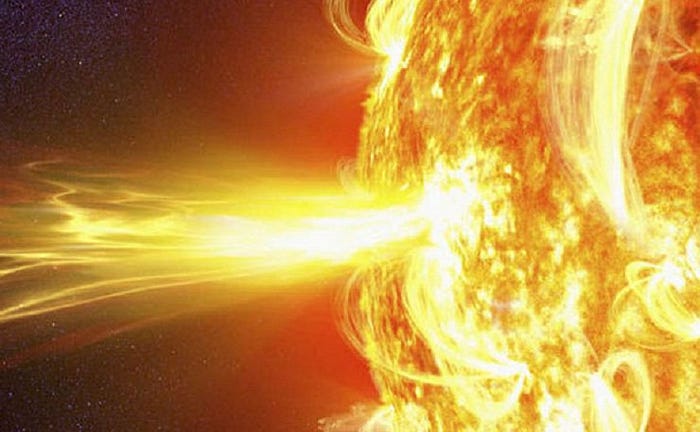The Future of Our Sun: What Awaits After Its Demise
Written on
Chapter 1: The Impermanence of Stars
In the vast expanse of the Universe, one of the most fundamental truths is that nothing endures indefinitely. The interplay of gravitational, electromagnetic, and nuclear forces ensures that everything we perceive today will undergo transformation over time. This includes stars, our Sun being no exception, which will eventually exhaust its nuclear fuel.
However, the demise of a star such as our Sun doesn't signify the end of its existence. In fact, a captivating series of events unfolds after its initial death. While it is accurate to say that our Sun's energy is limited and we anticipate its "normal" stellar extinction, this process is merely a chapter in its life.
This video titled What Will Happen When Our Sun Dies? explores the fascinating aftermath of our Sun's demise, showcasing the stages it will go through and the cosmic processes involved.
Section 1.1: Understanding Stellar Classification
Our Sun is categorized as a G-class star, with an effective temperature around 5800 K, making it well-suited for human life during the daytime. The more massive a star, the brighter, hotter, and bluer it appears, though even stars with only about 8% of the Sun's mass can initiate hydrogen fusion into helium, as seen in M-class red dwarfs.
Subsection 1.1.1: The Birth of a Star

To qualify as a true star, an object must be capable of fusing hydrogen into helium. This process begins when a gas cloud collapses under its own gravity, converting gravitational energy into thermal energy. If the conditions become sufficiently hot and dense, nuclear fusion can commence.
Recent research has established that a star must reach an internal temperature of around 4 million K and possess at least 8% of the Sun’s mass to initiate hydrogen fusion.
Section 1.2: The Life Cycle of Stars
As a star evolves, it can encounter one of three primary destinies, dictated by its mass and the resulting core temperature.
- Low-mass stars (like red dwarfs) will only fuse hydrogen into helium and will never reach the temperatures required to fuse helium into heavier elements.
- Sun-like stars, including our own, will undergo a contraction once hydrogen fuel is depleted in the core, leading to helium fusion and the formation of a red giant.
- Massive stars, exceeding eight solar masses, will progress through multiple fusion stages, culminating in a spectacular supernova.
Chapter 2: The Inevitable Transformation
The demise of massive stars results in their outer layers being expelled into the interstellar medium, enriching it with heavy elements necessary for the formation of future stars and planetary systems. In contrast, Sun-like stars, which constitute about 25% of all stars, will undergo a captivating transformation into a planetary nebula and a white dwarf.
The video What Happens When the Sun Dies? delves into this transformation, providing insight into the eventual fate of our Solar System, highlighting the processes involved in the formation of a planetary nebula and the remnant white dwarf.
Section 2.1: The Red Giant Phase
During the red giant phase, Mercury and Venus will likely be engulfed by the expanding Sun, while Earth's fate remains uncertain. The icy bodies beyond Neptune may also face destruction as the Sun sheds its outer layers.
As the outer layers dissipate, the remnants will be a white dwarf, roughly half the mass of the current Sun, but only the size of Earth. The white dwarf will radiate heat over an extensive period, transitioning from a hot state to a cooler one.
Section 2.2: Cosmic Possibilities
Despite the seemingly grim fate awaiting our Sun, multiple scenarios could unfold in the distant future.
- Ejection from the Galaxy: After numerous gravitational interactions, our Sun could be expelled from the Milky Way.
- Revitalization: In a lucky turn of events, it might merge with another star or accumulate matter, reigniting nuclear fusion and shining anew.
- Black Hole Encounter: There exists a slim chance that it could be drawn into a black hole's gravitational pull, leading to a dramatic end.
In conclusion, the fate of our Sun is a tapestry woven with complexity and uncertainty. While the most probable outcomes suggest a long, gradual fade into obscurity, the Universe is full of surprises, and our Sun's journey may hold unexpected twists in the eons to come.